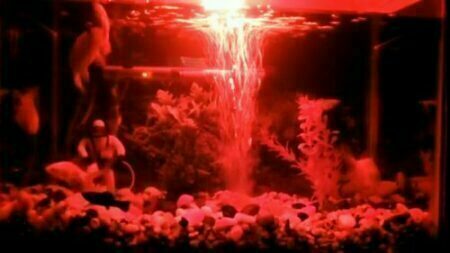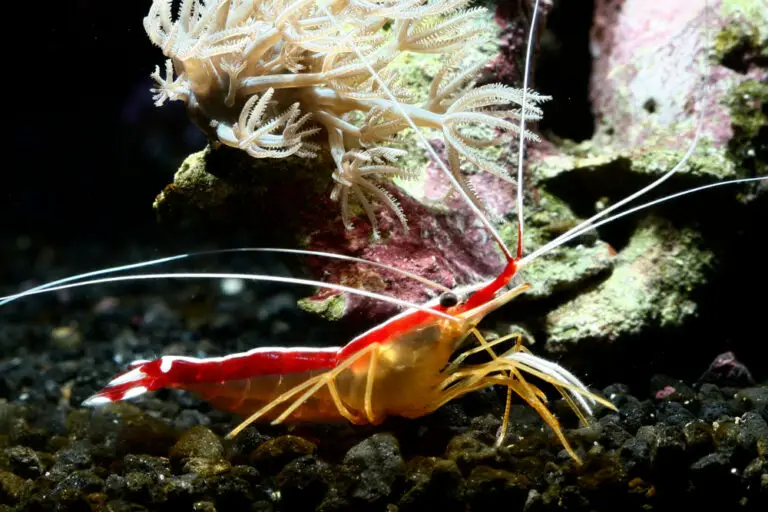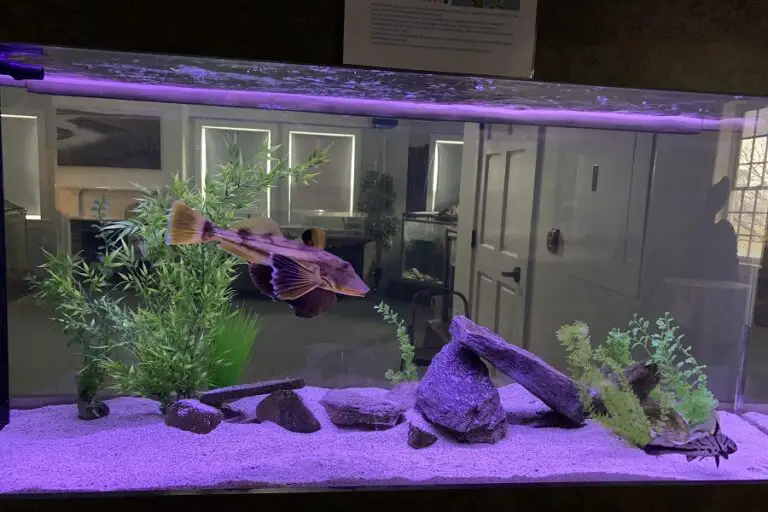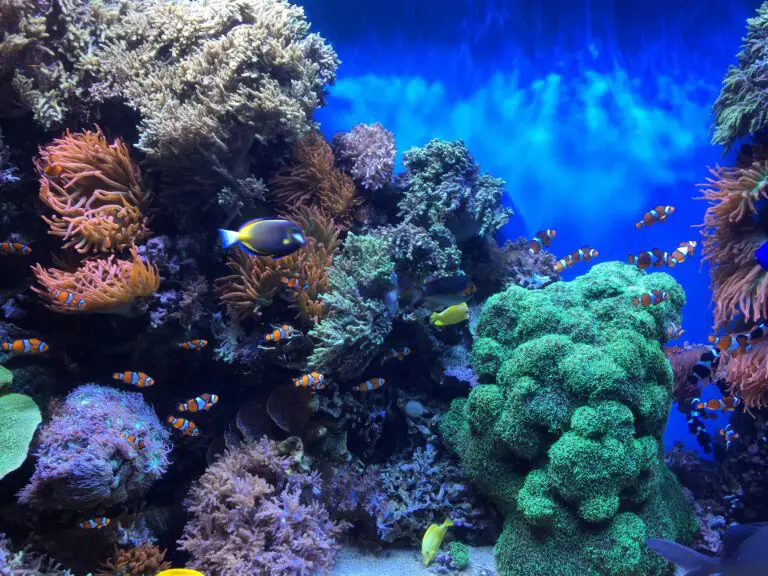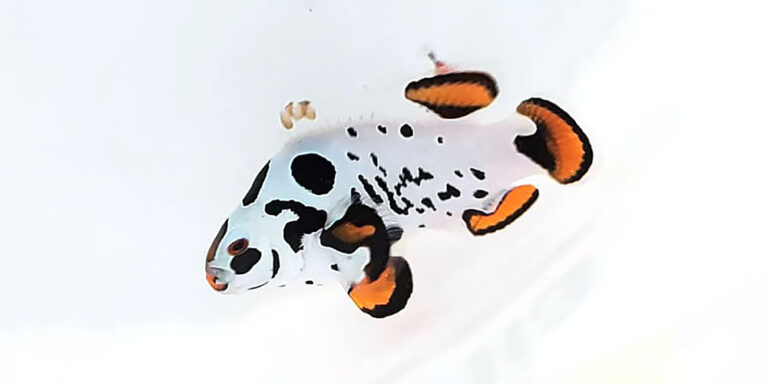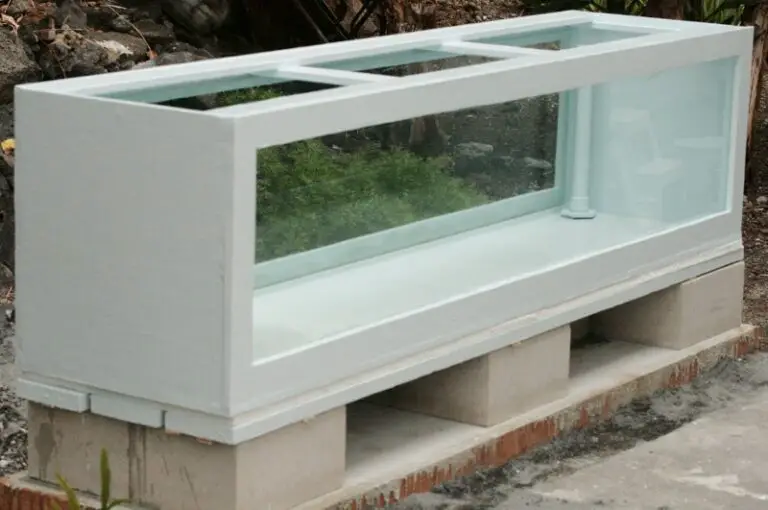Is Red Light Good for Aquarium Plants? (12 Tips to Follow)
Yes, red light is good for aquarium plants. Red light promotes plant growth by increasing chlorophyll production. Chlorophyll is essential for photosynthesis, which helps plants convert sunlight into energy.
In addition to promoting plant growth, red light also makes aquarium plants more aesthetically pleasing by enhancing their color.
Plants are a vital part of any aquarium, and choosing the right plants for your tank is important to create a healthy and balanced ecosystem. One question that often comes up when selecting plants is whether or not red light is beneficial for plant growth.
Let’s take a closer look at this topic to help you make the best decision for your aquarium setup. Benefits of Red Light for Aquarium Plants Red light has long been known to promote plant growth.
In fact, many grow lights used in commercial agriculture applications emit primarily red wavelengths of light. This is because red light promotes photosynthesis, which is the process that allows plants to convert sunlight into energy. Not only does this help them grow faster, but it also helps them produce more oxygen, which is essential for all aquatic life.
In addition to promoting growth, red light also has some other benefits for aquarium plants. For example, it can help prevent algae growth by inhibiting the production of chlorophyll in algae cells. It can also help plants absorb nutrients more efficiently and produce more vibrant colors.
Drawbacks of Using Red Light in an Aquarium While there are some clear benefits to using red light with aquarium plants, there are also some potential drawbacks that you should be aware of before making your final decision. First of all, red light penetrates water less effectively than other colors on the visible spectrum, like blue and green.
How Does Light Spectrum Affect Aquarium Plants?
The light spectrum has a considerable influence on aquarium plant growth and health. Varied plants require different amounts of light, but the red and blue sections of the spectrum are the most crucial for plant development.
The red spectrum (approximately 660 nm) is required for photosynthesis and the formation of chlorophyll, which gives plants their green hue.
The blue spectrum (approximately 430 nm) is essential for leaf and stem growth and development.
Plants that demand a lot of light, such stem plants and some types of carpeting plants, will benefit from a light spectrum with a lot of blue light.
Low light plants like Anubias and Java Fern will thrive in a light spectrum with a larger amount of red light. The strength of light, in addition to its hue, is crucial.
Aquarium plants require light to exist, and too much or too little light can limit development or cause issues like as algae formation.
The light spectrum is vital for aquarium plant development and health, and various plants have varying light requirements. The red and blue sections of the spectrum are most critical for plant development, although light intensity is also significant.
Master Aquatic Horticulturalist Explains
Which Colour Light is Best for Aquarium?
It is a common question among aquarium hobbyists: what color light is best for my aquarium?
The truth is, there is no easy answer to this question. It depends on several factors, including the type of fish and plants you have in your aquarium, the size of your tank, and the look.
In general, though, there are a few guidelines you can follow when choosing aquarium lighting. First, it is important to understand that different colors of light have different effects on aquatic life. For example, blue light tends to promote plant growth while red light helps bring out the colors in fish.
So if you are looking to accentuate the colors of your fish or encourage plant growth, pay attention to the color of the light bulb you choose. Second, consider the intensity of the light. Too much light can be just as harmful as too little light; it can cause algae blooms and stressing out fish.
If possible, get an adjustable fixture so that you can control how much light your tank gets. Start with lower settings and increase gradually over time until you find the right balance for your particular setup. Finally, think about aesthetics when choosing an aquarium lighting system.
Do you want a natural-looking setup or something more colorful?
LED lights come in a wide range of colors these days, so it’s easy to find something that will suit your taste. Just remember that brightly colored lights may not be ideal for all types of fish; some species do better in low-light conditions.
When it comes down to it, there is no “best” color of light for all aquariums; it really varies depending on individual needs and preferences.
Is Red Led Light Good for Fish?
Yes, red LED light is good for fish. Fish are able to see red light, and it has been shown to have a calming effect on them. Red LED lights are often used in aquariums and fish hatcheries to help reduce stress and promote relaxation.
Can fish see red light?
Different fish see colors and light differently. Some sources say most fish can’t see red, as water absorbs it fast and it doesn’t go deep. But other sources say some fish can see red and other colors like green, blue, and ultraviolet. These fish have special cells in their eyes that sense more wavelengths.
How well fish see red depends on many things, like the kind of fish, the water depth, the time of day, and the water quality. Knowing how fish see can help us learn more about them and pick the best lights or baits for them.
What Light Spectrum is Best for Aquarium Plants?
If you are looking to grow plants in your aquarium, it is important to choose the right light spectrum. The best light spectrum for aquarium plants is a full spectrum light. This type of light includes all the wavelengths of visible light, from red to blue.
Full spectrum lights are ideal for plant growth because they provide the full range of colors that plants need for photosynthesis. Red and blue light are especially important for plant growth, so a full spectrum light will ensure that your plants get everything they need to thrive.
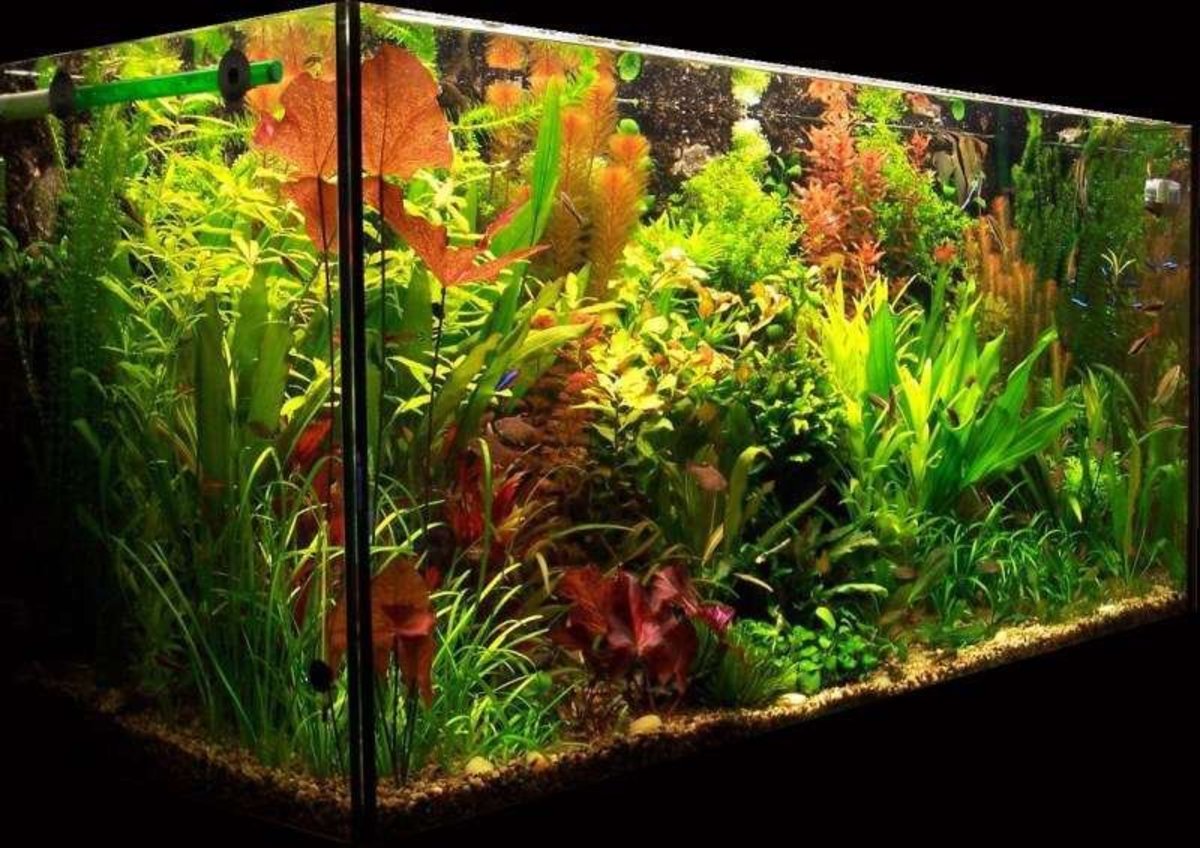
Credit: pethelpful.com
What Color Light is Best for Aquarium Plants?
If you are looking to grow plants in your aquarium, you may be wondering what color light is best. The truth is, there is no one perfect answer for all aquariums and all types of plants. However, there are some general guidelines that can help you choose the right light for your plants.
In general, most aquarium plants need a balance of both blue and white light. Blue light promotes growth and helps prevent algae growth, while white light helps bring out the colors in your plants. If you are growing low-light plants, you will likely need more blue light than white light.
High-light plants usually need more white light than blue light.You also need to consider the intensity of the light when choosing a bulb for your aquarium. Too much light can actually be harmful to plant growth, so it is important to find a bulb that is not too intense.
You will also want to make sure that the bulbs you select provide a full spectrum of lighting, as this will promote healthy plant growth.
Red or Blue Light for Aquarium Plants
If you’re considering adding aquarium plants to your tank, you may be wondering whether to use red or blue light. Both colors of light can be beneficial for plant growth, but each has its own advantages and disadvantages. Here’s a closer look at red and blue light for aquarium plants so you can decide which is best for your tank.
Red Light for Aquarium Plants Red light is often used in aquariums because it promotes plant growth. Red light helps plants produce more chlorophyll, which is necessary for photosynthesis.
In addition, red light encourages the production of enzymes that are important for plant metabolism. As a result, plants grown under red light tend to be healthy and vigorous. However, there are some drawbacks to using red light for aquarium plants.
For one thing, red light doesn’t penetrate water as well as blue light does. This means that aquatic plants won’t grow as tall under red light as they would under blue light. In addition, algae tends to grow more quickly under red light than it does under other colors of light.
If you have a problem with algae in your tank, using red light may make it worse. Algae isn’t necessarily a bad thing, and many fish enjoy eating it! But if you want to keep your aquarium looking clean and tidy, you may want to avoid using too much redlight.
Blue Light for Aquarium Plants Blue light penetrates water better than any other color of light, making it ideal for growing aquatic plants. Unlike land-based plants, aquatic plants need lots of sunlight in order to grow properly.
They also need sunlight to help them produce the food they need through photosynthesis. While blue colored LEDs don’t provide quite as much intensity as direct sunlight, they come pretty close. Blue LED lights also have the advantage of not encouraging algae growth like other colors do. Algae needs both nitrogen and phosphorus to grow, neither of which are present in large quantities in most tanks. However, some types of algae can still thrive even in low-nutrient environments; these types are less likely to proliferate under blue lighting conditions.
Is Blue Light Good for Aquarium Plants at Night?
Many aquarium hobbyists are wondering if blue light is good for their plants at night. The short answer is yes, blue light can actually be beneficial for aquarium plants! Here’s a closer look at why this is the case:
First of all, it’s important to understand that blue light is part of the visible spectrum of sunlight. This means that it contains more energy than other colors of light, like red and green. As a result, blue light penetrates deeper into underwater plant leaves than other colors.
This can help stimulate growth and photosynthesis in aquatic plants.In addition, many aquarium plants are adapted to low-light conditions. They naturally absorb more blue light than other colors in order to thrive in their environment.
For these plants, adding extra blue light at night can help promote growth.Of course, you don’t want to go overboard with the blue light. Too much of any color can cause problems for your aquarium plants.
But as long as you keep an eye on your plant’s health and adjust the amount of lighting accordingly, adding some extra blue light at night can be a great way to boost growth and vitality in your aquatic plants!
Is Green Light Good for Aquarium Plants?
Green light is one of the colors in the visible spectrum. It has a wavelength of about 520-570 nanometers. Green light is used in many different ways, including to help aquarium plants grow.
Aquarium plants need light to photosynthesize and create their own food. They also use light to help them orient themselves towards the source of light so they can maximize their exposure to it. In general, most aquarium plants do best with a mix of different colors of light, including green.
Green light can be provided by fluorescent bulbs, LED bulbs, or even natural sunlight if the aquarium is placed near a window. The intensity and duration of the light will need to be adjusted depending on the type of plant and its needs.
What Does Green Light in Fish Tank Do?
The green light in a fish tank does several things.
First, it provides a source of light for the algae and plants in the tank.
Second, it helps to keep the water clear by providing a way for the fish to see through the water.
Third, it attracts bugs and other small creatures that the fish can eat.
Is Led Light Good for Aquarium Plants?
If you’re thinking about using LED lighting for your aquarium plants, you might be wondering if it’s really the best option. After all, there are other types of lighting available, so why choose LED?
Here are some reasons why LED lighting is great for aquarium plants:
1. LEDs emit very little heat, so they won’t raise the water temperature in your tank. This is important because too much heat can damage delicate aquatic plants.
2. LEDs produce a bright light that aquatic plants need to photosynthesize and grow properly. But because LEDs don’t emit a lot of heat, they won’t cause algae growth like other types of lighting can.
3. You can find LEDs in a variety of colors, so you can choose the perfect light spectrum for your plants. This way, they’ll get the specific wavelengths of light they need to thrive.
What does red light in fish tank do?
Red light in fish tank can have different effects depending on the type of fish, plants, and algae in the tank. Red light can enhance the appearance of some fish and plants, but it can also promote algae growth and make the water look reddish.
Red light can also be used to observe nocturnal fish without disturbing them, but it should not be left on during the night as fish need complete darkness to rest. Red light is not necessary for most fish tanks, and it should be balanced with other colors of light to create a natural spectrum.
Is Blue Light Good for Aquarium Plants?
Aquarium plants are a great way to add some color and life to your fish tank. But you may be wondering, is blue light good for aquarium plants? The short answer is yes!
Blue light is necessary for photosynthesis, which is how plants convert light into energy. So if you want your aquarium plants to thrive, you need to provide them with plenty of blue light. There are a few things to keep in mind when choosing blue lights for your aquarium.
First, make sure the bulbs are designed specifically for aquarium use.
Second, don’t overdo it too much light can actually be harmful to aquatic plants.
Third, pay attention to the spectrum of the light different bulbs emit different amounts of blue light, so choose ones that will give your plants the right amount of light they need.
With these tips in mind, go forth and add some beautiful blue-hued plants to your aquarium! Your fish will thank you.
Best Light Color for Freshwater Aquarium
If you are looking for the best light color for a freshwater aquarium, there are a few things to consider.
First, what type of fish do you have? Different fish require different levels of light. For example, bottom dwelling fish need less light than those that swim near the top of the tank.
Second, what time of day do you want the lighting to be on? Aquariums should have a natural day/night cycle with 8-12 hours of light each day. This can be achieved with artificial lighting by using a timer.
Third, what plants do you have in your aquarium? Some plants need more light than others in order to grow.
The best light color for a freshwater aquarium will depend on these factors. If you have a mixed tank with different types of fish and plants, it is best to use full spectrum lighting. This will provide the most natural look for your aquarium and all of your fish and plants will thrive.
However, if you have a specific goal in mind for your aquarium (such as breeding certain fish), then you may want to use different colors of light to achieve this goal.
For example, blue LED lights can help promote spawning in some species of fish. In general, the best way to determine the best light color for your freshwater aquarium is to experiment and see what works best for your particular setup.
Conclusion
Yes, red light is good for aquarium plants! Red light helps promote plant growth by providing the perfect wavelength for photosynthesis. Plants need light to produce food and energy, and red light is ideal for this purpose.
In addition, red light also provides the right color spectrum for plant growth.
